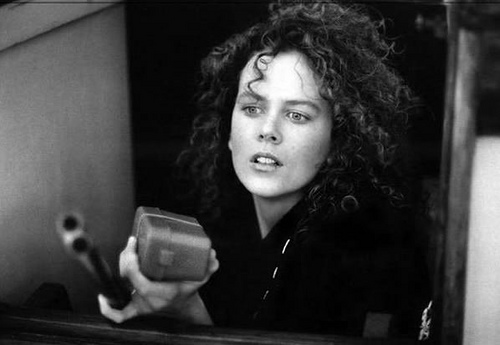
Deadlock
1970
Directed by Roland Klick
Music by Can
Starring Mario Adorf, Anthony Dawson, Marquard Bohm
So, the plot: Following a bank heist, two robbers separate and vow to meet at a ghost town to split up the cash. Extreme violence ensues when they finally meet in the desolated wasteland. The two gunmen are never really defined as "good" or "evil" for neither have any values and every action is a deceit, though they are implied to have differing values.
There are other characters though as well in the film, such as a nymphomaniac, an old woman, and a bumbling recluse appropriately named Dump. These supporting characters serve as fitting contrast to the emotionless, machine-like protagonist/antagonist in that they convey heavy amounts of emotion in their own way (the nympho lust and innocence, the old woman conquest and reminiscence). There's even the appearance of a third gunman named Sunshine that complicates things even more.
The characters speak in an obtuse way, remembering mysterious events that are never explained in the film and one supposes that perhaps they are testing each other in some strange game. These characters are driven by greed and selfishness and no one is spared judgment.
The sun is also a prominent character for it takes up a fair amount of screen time itself. The sun is very symbolic of the unwavering, incorruptible role of fate and the fate of many of the characters could be seen as undeserved yet inevitable.
Another interesting facet of this film is the battle between the gunmen. Surely their "prize" is worthless in this desolation and yet they fight to the death to win it anyway. It's a fine statement on the futility of bravado and the vague destructive conslusion of greed.
All in all, it's a pretty good film that is more entertaining to describe than to watch, but it has its moments and the underlying symbolism helps a lot. Since it is rather low-budget (and shot in an improvised location), there's some shoddy dubbing (though not bad by B-movie standards) and bizarre cuts, but one can see the raw vision behind it which makes it worth checking out.
Rating: * * * * (Four stars out of six)







